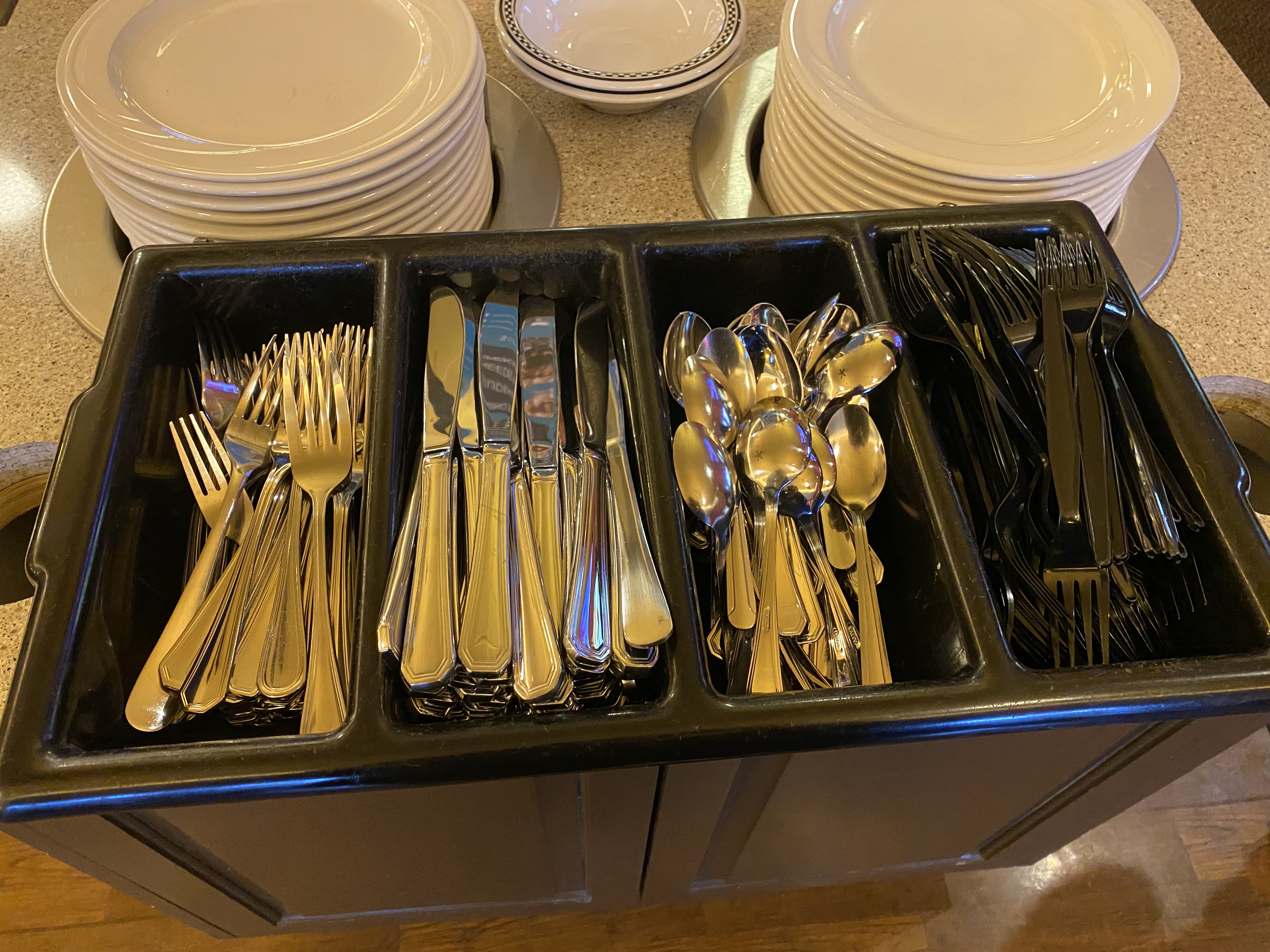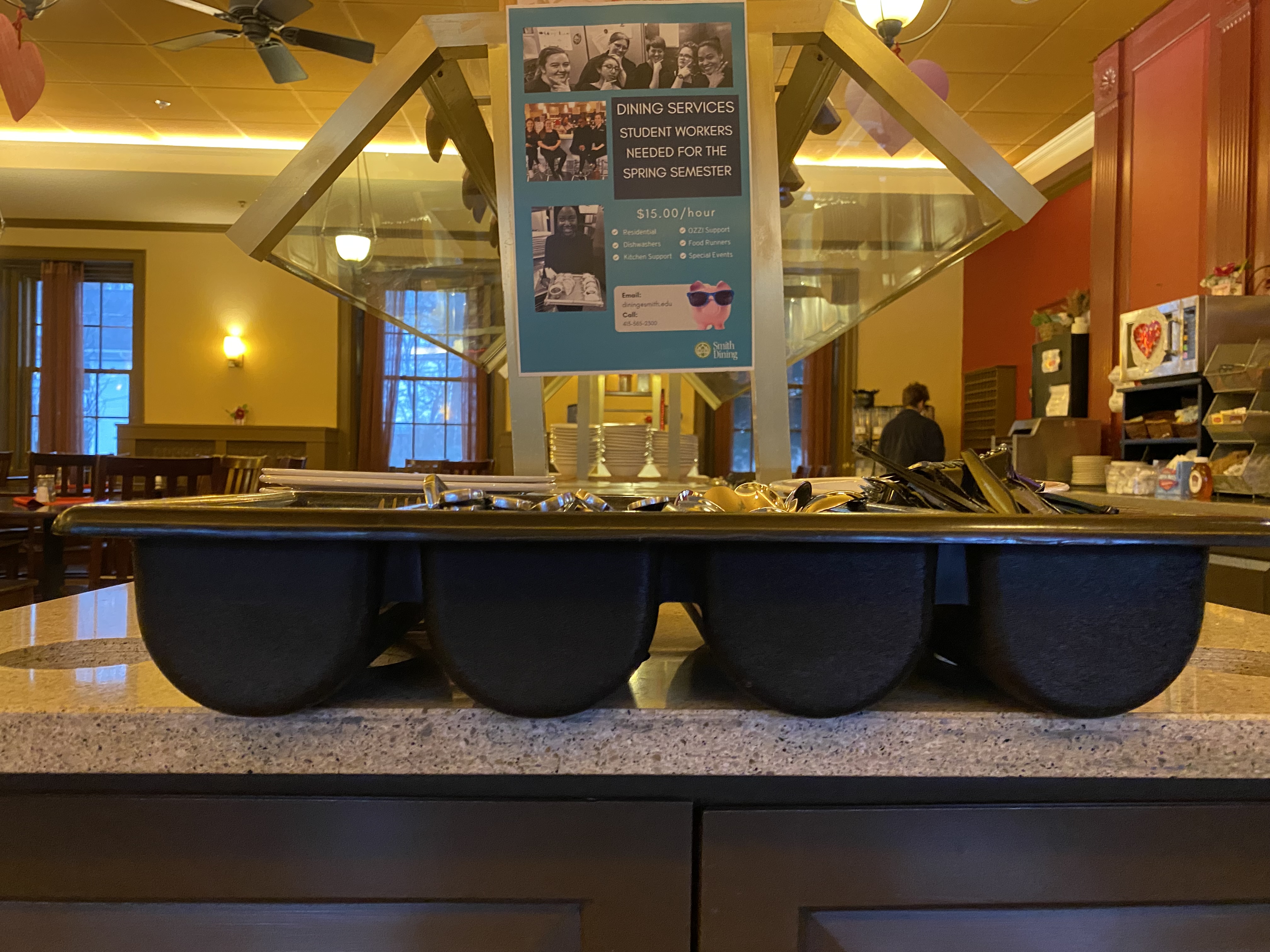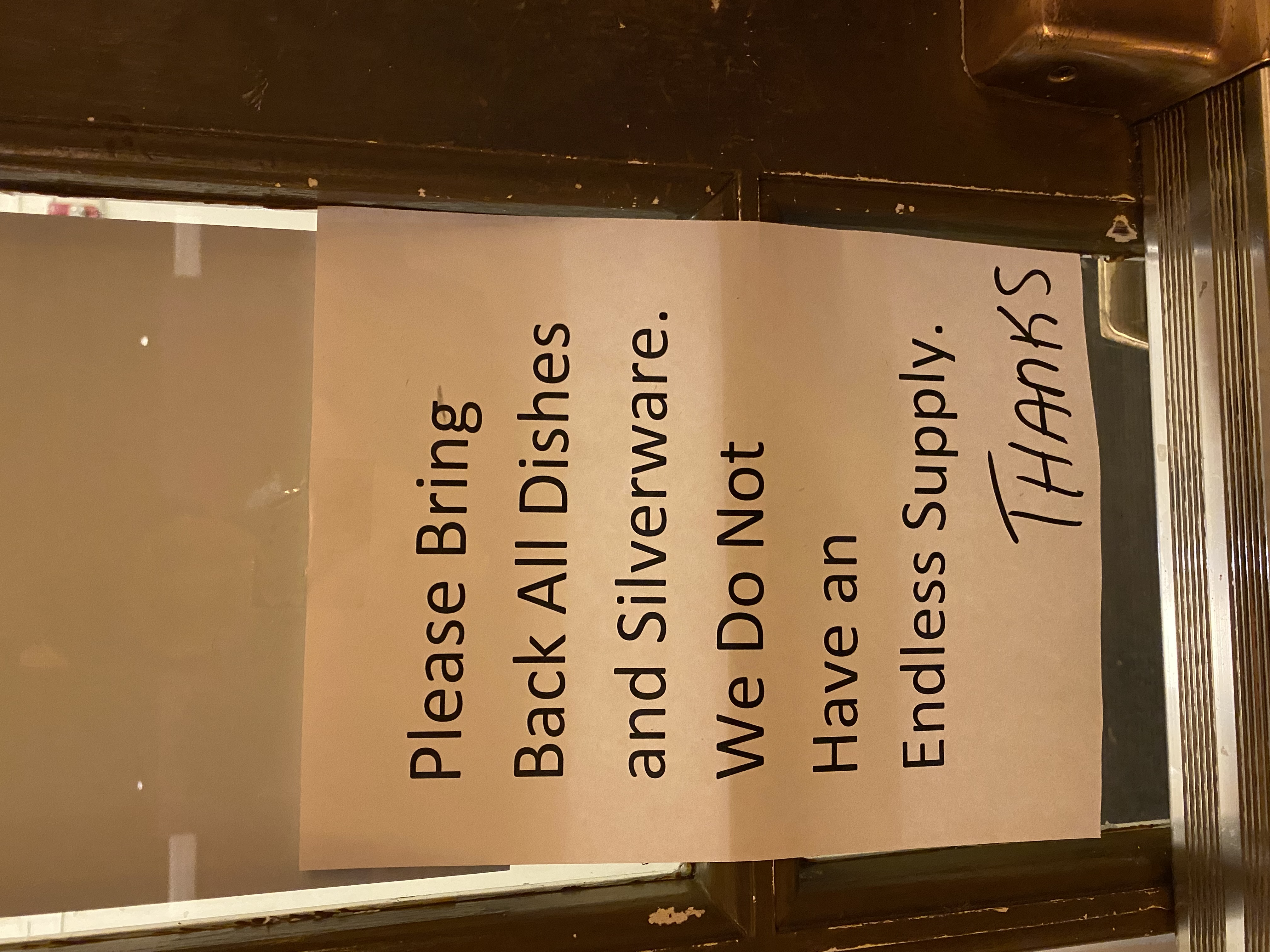Dawn, a kitchen staff member for Cushing/Emerson, stands in front of a case of silverware. She grabs a handful of metal forks.
“These are all the forks in the building. For two dining halls,” Dawn laments. We count them together and find 37 forks.
I’ve just started my Sunday night dining hall shift in Cushing/Emerson, and Dawn’s first order of business was to show me where to find disposable forks in case the real silverware runs out. Emerson is lucky enough to have both metal forks and supplementary plastic forks, whereas Cushing is supplied only with plastic forks.

 All forks in Emerson Dining Hall.
All forks in Emerson Dining Hall.
It hasn’t always been this way.
Flash back to last semester, mid-terms. I spent the majority of my hour and a half shift emptying a milk crate full of small white boxes, each containing five shiny, individually wrapped, brand new forks. The silverware bucket overflowed with forks, plenty for each student coming through to use. But over the months, this reserve has depleted.
Senior Jackie Wang has noticed the lack of forks across Smith dining halls but largely isn’t bothered. For her, a plastic fork or a spoon in place of a metal fork will do the job just fine, except she says, when eating “pasta… long pasta.”
While the problem seems straightforward, the solution is less so. Obtaining more forks proves a bureaucratic maze through hierarchies of Dining staff, leaving kitchen staff feeling like their repeated requests for more silverware are unheard.
Managers place bulk orders on reusable amenities only once or twice a semester, so even when silverware is requested, the immediate scarcity remains. To make matters more complicated, the regular manager in charge of supplying Emerson has been out for the past few months, while stand-in managers have yet to address the widespread fork shortage. The solution in the meantime has fallen on chefs, who can order plastic utensils on a weekly basis through companies that supply food.
Dawn finds that this seemingly silly issue of missing metal forks has a more profound impact on her work. “It’s comical, but frustrating… it really affects me.” Dawn describes Julia Child Day and the sense of embarrassment she felt for setting table placements with nice tablecloths and… plastic forks.
Emerson seats 61 students at a time, but with 37 forks, it’s impossible to keep up with the demand. Especially, as Jackie finds, “when the meal’s really really popular… like 5:30 when everyone wants to go eat.”
The whereabouts of the metal forks remains a mystery engulfed in speculation.
Dawn’s guess is that most of it is accidental. She recounts a moment when, walking past the compost bin, she noticed a shining metal fork resting atop a mountain of uneaten food scraps. Her theory is that most wind up in the garbage. But have all the missing forks wound up in the trash?

There have been signs up for months on Emerson doors pleading students not to take dishware from the hall or at least to bring it back. Neatly printed signs sit on each table in King/Scales, Tyler, and Cutter/Ziskind, imploring the same. Clearly, Smith Dining thinks student theft – however well-meaning – is significantly responsible. But whether it’s a lack of seating, convenience, or a desire to hole up alone in their room for a meal, students continue to bring dishes and silverware out.
“I’m gonna be honest, I have a fork sitting in my room,” Jackie says.
Update: Since first reporting this story, the regular manager for Emerson has returned to work and provided the dining hall with 60 new metal forks, bringing the grand total to 97. While this number allows the dining hall to run smoothly and appeases student needs, it’s a wonder how long the supply will last.